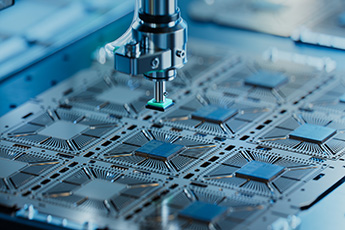Of the top 10 highest summits in North America, nine of them are in AK. The 10th highest is Mt. Whitney in CA at 14,495’ high. Unless you are a seasoned climber, it is not easy to traverse any of those mountains.It may not always be easy to traverse regulatory guidelines either, but it is imperative. So, with the latest guidance from the Federal Financial Institutions Examination Council (FFIEC) on June 21, 2021, we wanted to provide you with the highlights. The FFIEC updated four sections and the respective examination procedures of the Bank Secrecy Act/Anti-Money Laundering (BSA/AML) Examination Manual. The FFIEC stated that the updates don’t provide new instructions for examiners or reflect an increased focus on certain areas, but rather are intended to provide additional transparency regarding the existing examination process. In order to fully understand these updates, we recommend reviewing each section in more depth on the FFIEC website. However, we provide you with general highlights of these sections, along with the abbreviated list of examiner steps for your convenience.1. International Transportation of Currency or Monetary Instruments Reporting (CMIR)Provisions. FinCEN regulations state that the person who “transports, mails, ships, or receives, or causes or attempts to transport, mail, ship, or receive currency or monetary instruments in excess of $10,000 from or to a place outside the United States” is the one responsible to file the CMIR. If a bank or credit union did not collect the money from a customer outside the US, then it has no duty to file a CMIR on its own behalf.However, whether a CMIR is filed or not, financial institutions (FIs) are not dismissed from their obligations to file Currency Transaction Reports (CTR) and Suspicious Activity Reports (SAR) as required by these regulations.2. Purchase and Sale of Certain Monetary Instruments RecordkeepingInformation needed. All FIs know that they are not allowed to issue or sell a bank check or draft, cashier’s check, money order, or traveler’s check for $3K or more in currency, without certain information. This information can be found on the FFIEC site and must be gathered for the issue or sale of monetary instruments to any individual purchaser, which involves currency in amounts of $3K to $10K inclusive.3. Reports of Foreign Financial AccountsGuidance. The guidance states that “a United States person (including a bank) must file a Report of Foreign Bank and Financial Accounts (FBAR) if that person has a financial interest in, or signature or other authority over, one or more bank, securities, or other financial accounts in a foreign country, and the aggregate maximum value of the accounts exceeds $10K at any time during the calendar year.” 4. Special MeasuresGuidance. USA PATRIOT Act, Section 311 added 31 USC 5318A to the BSA. This authorizes the Secretary of the Treasury to compel US FIs and domestic financial agencies to take particular special measures against “foreign jurisdictions, foreign financial institutions, classes of international transactions, or types of accounts that are of primary money laundering concern.” These include measures to obtain information on beneficial ownership, specific payable-through accounts, and certain correspondent accounts. These should be reviewed in detail to ensure they are followed appropriately for full compliance.For the above four sections, the specific steps taken by examiners are similar. So, we provide you with a short list of these steps, while the full examiner steps can be found in each section.
- Determine whether the FI has the proper policies, procedures, and controls pertaining to each BSA requirement and whether the internal controls are designed to mitigate and manage money laundering//terrorist financing and other illicit financial activity risks.
- Determine if the FI’s policies and procedures ensure continuing compliance and are commensurate with the bank’s risk profile.
- Select a sample of transactions and reports to check if the selected data meets the requirements, as stipulated within BSA rules and regulations.
- In assessing compliance, the examiner is likely to take into account the number of noncompliance occurrences by the FI and the degree of divergence from appropriate procedures and protocols.
- Lastly, examiners may review information, such as independent testing or audit reports, to aid in their assessment of the FI’s compliance with BSA requirements.




